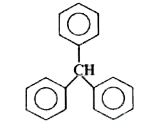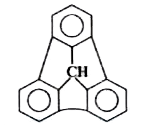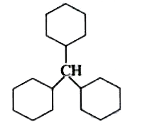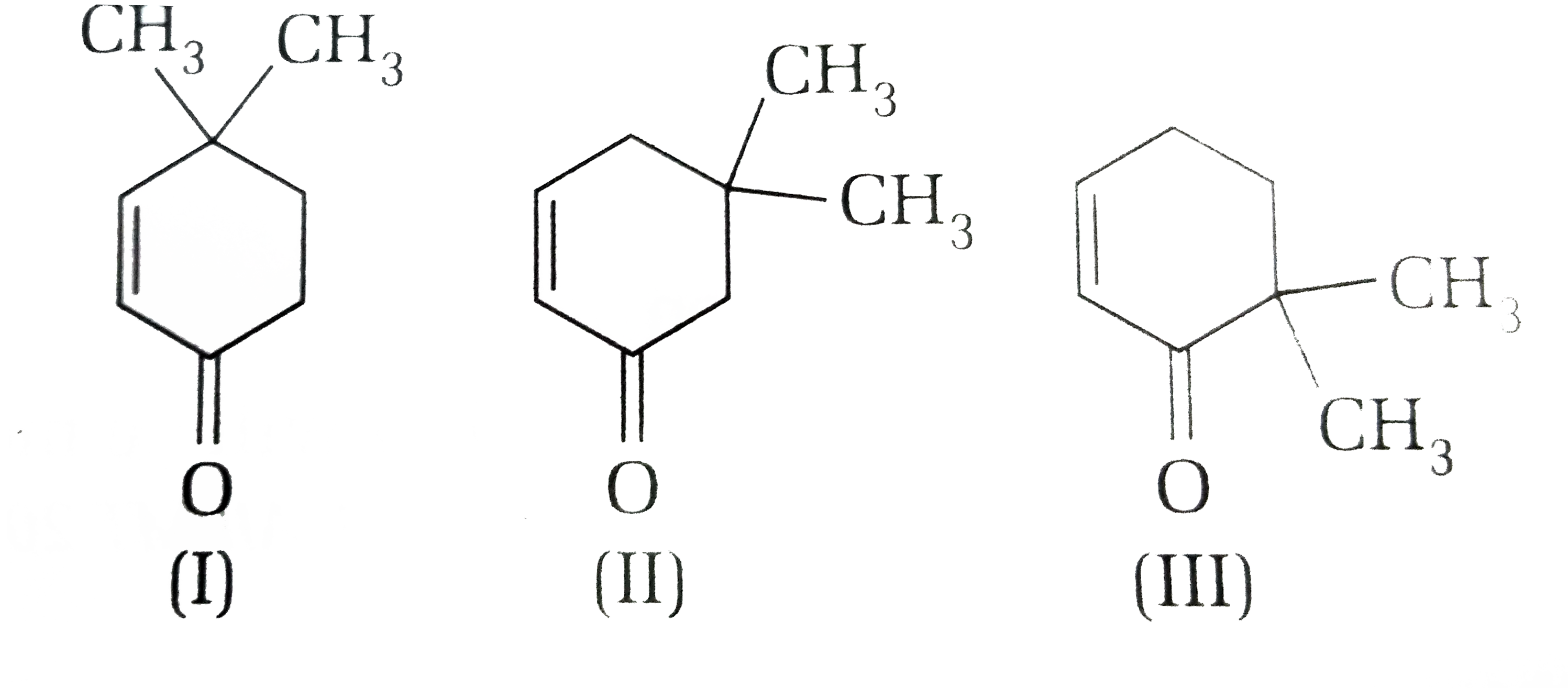Identify the compound that exhibits tautomerism:
2-butene
lactic acid
2-pentanone
phenol
2-butene
lactic acid
2-pentanone
phenol
The correct Answer is:D
To solve the question of identifying the compound that exhibits tautomerism among the given options, we will analyze each compound step by step.
Step 1: Understand Tautomerism
Tautomerism is a type of isomerism where tautomers are isomers that differ in the position of protons and electrons, while the carbon skeleton remains unchanged. The most common example of tautomerism is the keto-enol tautomerism, where a ketone can convert to its corresponding enol form.
Hint: Remember that tautomerism involves a shift of a proton and is often seen in compounds with functional groups that can exist in two forms (like keto and enol).
Step 2: Analyze 2-butene
2-butene has the structure CH3-CH=CH-CH3. This compound does not have a functional group that allows for proton transfer to form a different isomer. Therefore, 2-butene does not exhibit tautomerism.
Hint: Look for functional groups that can participate in proton transfer; alkenes like 2-butene typically do not.
Step 3: Analyze Lactic Acid
Lactic acid has the structure CH3-CHOH-COOH. Although it has hydroxyl (-OH) and carboxylic acid (-COOH) groups, the presence of resonance and the stability of these groups means that lactic acid does not exhibit tautomerism.
Hint: Consider the stability of resonance structures; if resonance stabilizes the compound, it may not undergo tautomerism.
Step 4: Analyze 2-pentanone
2-pentanone has the structure CH3-CO-CH2-CH2-CH3. This compound can exist in two forms: the keto form (2-pentanone) and the enol form (which has a hydroxyl group). The proton can shift from the alpha carbon to the carbonyl oxygen, allowing for the formation of the enol. Thus, 2-pentanone does exhibit tautomerism.
Hint: Look for carbonyl groups (C=O) that can convert to enols (C=C-OH) through proton transfer.
Step 5: Analyze Phenol
Phenol has the structure C6H5-OH. While it can form a resonance-stabilized structure, it does not exhibit tautomerism in the same way that keto-enol systems do. The presence of the aromatic ring stabilizes the phenolic structure, preventing the formation of a stable keto form.
Hint: Aromatic compounds often have resonance that stabilizes their structure, making tautomerism less likely.
Conclusion
From the analysis:
- 2-butene does not exhibit tautomerism.
- Lactic acid does not exhibit tautomerism due to resonance.
- 2-pentanone does exhibit tautomerism.
- Phenol does not exhibit tautomerism in the traditional sense.
The compound that exhibits tautomerism is 2-pentanone.
Final Answer: 2-pentanone exhibits tautomerism.
Tautomerism is a type of isomerism where tautomers are isomers that differ in the position of protons and electrons, while the carbon skeleton remains unchanged. The most common example of tautomerism is the keto-enol tautomerism, where a ketone can convert to its corresponding enol form.
2-butene has the structure CH3-CH=CH-CH3. This compound does not have a functional group that allows for proton transfer to form a different isomer. Therefore, 2-butene does not exhibit tautomerism.
Lactic acid has the structure CH3-CHOH-COOH. Although it has hydroxyl (-OH) and carboxylic acid (-COOH) groups, the presence of resonance and the stability of these groups means that lactic acid does not exhibit tautomerism.
2-pentanone has the structure CH3-CO-CH2-CH2-CH3. This compound can exist in two forms: the keto form (2-pentanone) and the enol form (which has a hydroxyl group). The proton can shift from the alpha carbon to the carbonyl oxygen, allowing for the formation of the enol. Thus, 2-pentanone does exhibit tautomerism.
Phenol has the structure C6H5-OH. While it can form a resonance-stabilized structure, it does not exhibit tautomerism in the same way that keto-enol systems do. The presence of the aromatic ring stabilizes the phenolic structure, preventing the formation of a stable keto form.
From the analysis:
- 2-butene does not exhibit tautomerism.
- Lactic acid does not exhibit tautomerism due to resonance.
- 2-pentanone does exhibit tautomerism.
- Phenol does not exhibit tautomerism in the traditional sense.
Topper's Solved these Questions
- BOOK - ICSECHAPTER - ORGANIC CHEMISTRY : SOME BASIC PRINCIPLES AND TECHNIQUES EXERCISE - TRUE OR FALSE TYPE QUESTIONS50videos
ORGANIC CHEMISTRY : SOME BASIC PRINCIPLES AND TECHNIQUES
- BOOK - ICSECHAPTER - ORGANIC CHEMISTRY : SOME BASIC PRINCIPLES AND TECHNIQUES EXERCISE - FILL IN THE BLANK TYPE QUESTIONS46videos
ORGANIC CHEMISTRY : SOME BASIC PRINCIPLES AND TECHNIQUES
- BOOK - ICSECHAPTER - ORGANIC CHEMISTRY : SOME BASIC PRINCIPLES AND TECHNIQUES EXERCISE - ESSAY ( LONG ANSWER ) TYPE QUESTIONS42videos
ORGANIC CHEMISTRY : SOME BASIC PRINCIPLES AND TECHNIQUES
- BOOK - ICSECHAPTER - HYDROGENEXERCISE - NCERT TEXT-BOOK EXERCISE (With Hints and Solutions)53videos
HYDROGEN
- BOOK - ICSECHAPTER - REDOX REACTIONS (OXIDATION AND REDUCTION)EXERCISE - NCERT TEXT-BOOK. EXERCISES ((With Hints and Solutions)69videos
REDOX REACTIONS (OXIDATION AND REDUCTION)
Similar Questions
Knowledge Check
- Question 1 - Select One
The compound which may exhibit tautomerism:
A B
B C
C DAll of these
DAll of these - Question 2 - Select One
Which of the following compounds can exhibit tautomerism?
AC6H5CHOBC6H5−O∣∣C−CMe3CC6H5−O∣∣C−CH2−O∣∣C−HDC6H5−O∣∣C−C6H5 - Question 3 - Select One
Identify the compound which contain most acidic hydrogen :
A B
B C
C D
D
Which of the following compounds will exhibit tautomerism?
 View Solution
View SolutionThe compound 2,3- dichlorobutane exhibits
View SolutionIdentify the compound which on reaction with dilute acid gives H2O2
View SolutionStatement-1: Cyclopentanone exhibits keto enol tautomerism.
and
Statement-2: Cyclopentanone has two hydrogen atoms attached to the carbon atom adjacent to carbonyl.View SolutionWhich of the following compounds exhibit acid base reaction with NaOH?
View Solution


